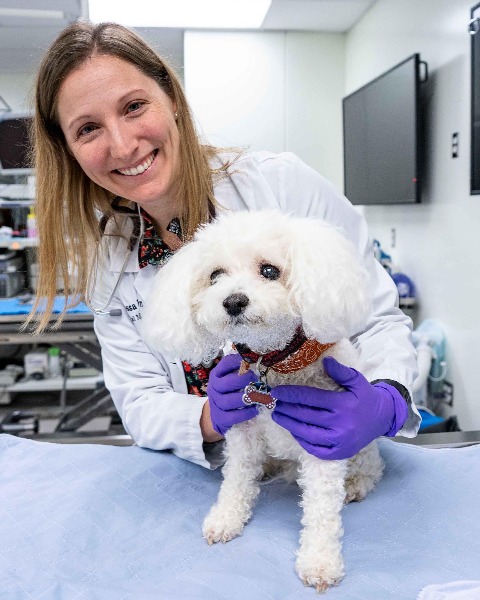Small Animal Internal Medicine
In Person Only
GI31 - Bile Acid Dysmetabolism in Feline Chronic Kidney Disease is Associated with 26 Peptacetobacter Hiranonis Variants
Friday, June 7, 2024
5:15pm - 5:30pm CT
Location: MCC 103 F
CE: 0.25

Jenessa A. Winston, DVM, PhD, DACVIM (Small Animal Internal Medicine) (she/her/hers)
Assistant Professor
Ohio State University College of Veterinary Medicine
Columbus, Ohio, United States
Research Abstract - Oral Presenter(s)
Abstract: Background – The microbial-derived secondary bile acid (SBA) ursodeoxycholic acid (UDCA) is decreased in chronic kidney disease (CKD) cats. Peptacetobacter hiranonis is the only described SBA producing microbe in cats.Hypothesis/Objectives – Fecal bile acid dysmetabolism occurs in CKD cats, corresponding with reduced abundance of P. hiranonis.Animals – Healthy (n=6) and CKD (n=28) client-owned cats.Methods – Prospective, cross-sectional study. Targeted liquid chromatography and tandem mass spectrometry metabolomics and 16S rRNA gene amplicon sequencing of fecal samples. Silva taxonomy and NCBI nucleotide BLAST were utilized.Results – Bile acid dysmetabolism characterized by 50% SBAs (Bray-Curtis PERMANOVA p97% nucleotide identity to P. hiranonis 16S rRNA gene sequence were identified. The combined relative abundance of these 26 ASVs was significantly reduced (median 2.1%) in CKD cats with 50% SBAs (median 13.9%, Kruskal-Wallis FDR adjusted p=0.0002) and healthy cats with >50% SBAs (median 15.5%, Kruskal-Wallis FDR adjusted p = 0.0112). Conventional qPCR primers for P. hiranonis would have identified 23/26 (88.4%) of the ASVs.Conclusions and clinical importance – Fecal bile acid dysmetabolism characterized by < 50% SBAs occurs in CKD cats. The dysmetabolism is partially explained by reduced abundance of P. hiranonis. Currently, methodologies to detect P. hiranonis capture similar microbial genetic signatures, but do not provide information regarding functional genetic potential to produce SBAs.

